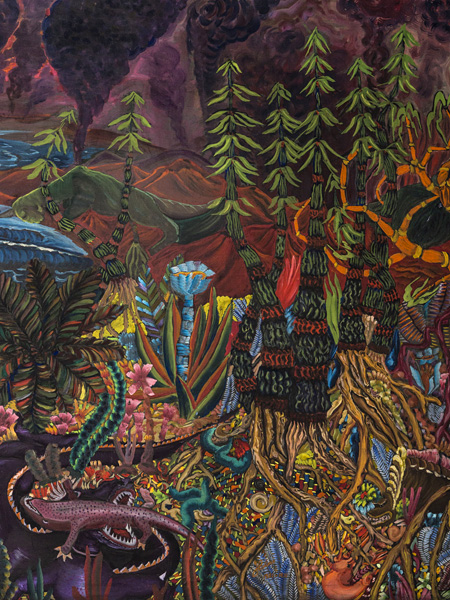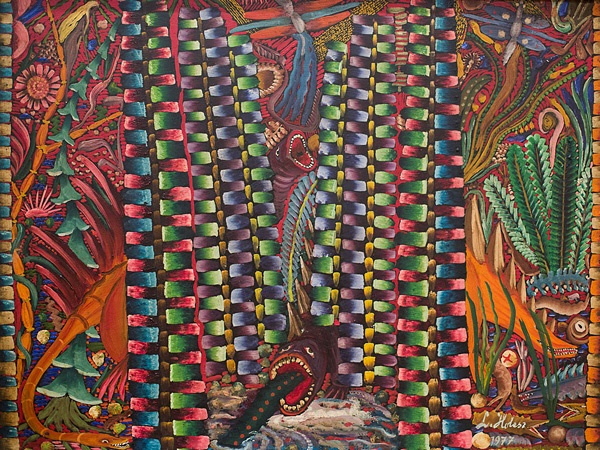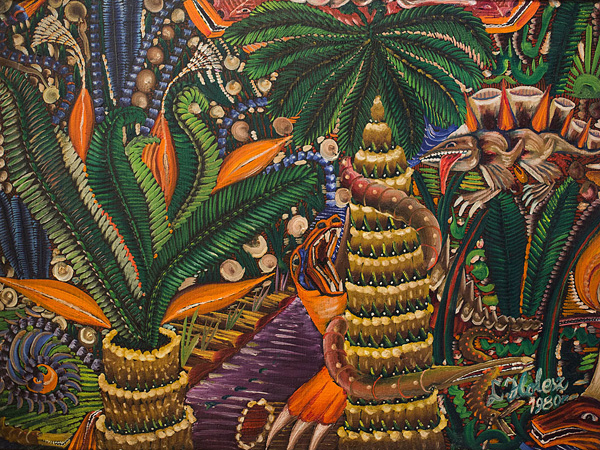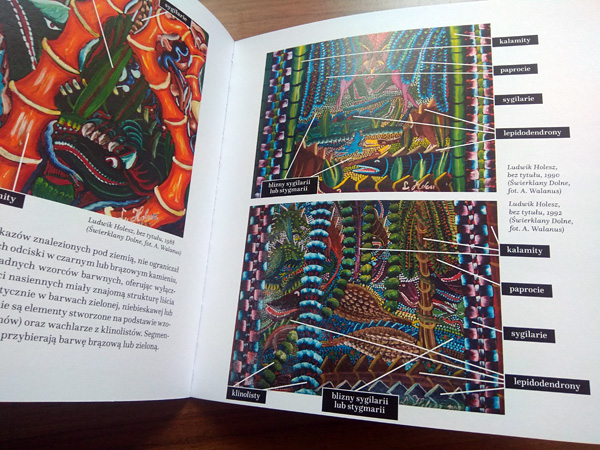Carboniferous forest in primitive painting – a story about Ludwik Holesz
Primitive art has accompanied man for centuries, revealing itself, among other things, in the beautification of everyday objects, but also in the creation of non-utilitarian objects – sculptures and paintings depicting the beauty and hardships of the surrounding world. The lack of professional training of artists, characteristic of this trend, is compensated for by their deep individualism and sensitivity, which result in the richness of forms and the diversity of artistic visions. A large part of primitive art is primitive painting. Its representative is Ludwik Holesz, about whom you can read in a book recently published by the Upper Silesian Museum in Bytom.
Ludwik Holesz, a miner by profession, spent his entire life in Upper Silesia. While mining coal, he noticed the remains of fossil plants, which he later recreated as part of his passion. The artist did not have sufficient scientific knowledge. Still, his innate talent and colourful imagination allowed him to create fanciful and convincing visions of the Carboniferous world, filled with various plant and animal forms. The work of Ludwik Holesz caught the interest of Dorota Nalepka, a paleobotanist from our Institute, who, together with Maria Barbacka (also from the IB PAS), a specialist in older fossil floras, undertook the task of identifying the plant motifs depicted in Holesz's paintings (the two scientists are co-authors of the above-mentioned book).
The Carboniferous, a period from about 359 to 299 million years ago, is unofficially called the Coal Age. It was during this time that large areas of forest, rich in plant matter, appeared in the Earth's landscape, which, after dying off, over the next millions of years, turned into coal deposits. The Carboniferous forests painted by Holesz include ferns, which at that time often had a woody form and pinnate leaves, sigillarias, with long, straight trunks and thin serpentine leaves that fell off as the plants grew, leaving characteristic scars on the trunk, horsetails of unusual height (up to 20 meters) and similar in structure to those of today, calamites with a distinctly segmented, hollow trunk and underground rhizomes, or lepidodendrons belonging to lycophytes, with a tree-like structure with a thick trunk and a crown of leaves on top. Holesz's paintings are characterized by the dynamism of forms infinitely transforming from one to another. The change of colours and sizes of the depicted shapes seemingly does not matter, but the artist consistently maintains proportions and combinations. The vivid colour palette catches the eye, and the shimmering colours create texture and movement as if the painting were teeming with life.
The artist's paintings can be seen, among others, in his home village Świerklany Dolne (Silesia Province), the Upper Silesian Museum in Bytom, the Silesian Museum in Katowice, the Museum in Rybnik, as well as in private Polish and foreign collections and galleries.
We would also like to invite you to attend a meeting devoted to Holesz's work, which will be attended by the authors of the publication cited above. The meeting will take place on Thursday, March 16, at 5:00 pm, at the Upper Silesian Museum in Bytom, 2 Jan III Sobieski Square.

Fragment of the painting "Past and Future", Ludwik Holesz, 1973.
Photo: Courtesy of the Upper Silesian Museum in Bytom.

"Monsters and Ferns", Ludwik Holesz, 1977.
Photo: Adam Walanus.

"Carboniferous Era – Spring", Ludwik Holesz, 1980.
Photo: Adam Walanus.

Dorota Nalepka and Anna Segiet at the Holesz Family Gallery in Świerklany Dolne, against the backdrop of Ludwik Holesz's works (2016).
Photo: Adam Walanus.

Sample pages of the book "Artystyczne wizje karbońskiej puszczy. Twórczość Ludwika Holesza [Artistic visions of the Carboniferous forest. Works of Ludwik Holesz]".
Photo: Paweł Kapusta.

Sample pages of the book "Artystyczne wizje karbońskiej puszczy. Twórczość Ludwika Holesza [Artistic visions of the Carboniferous forest. Works of Ludwik Holesz]".
Photo: Paweł Kapusta.






